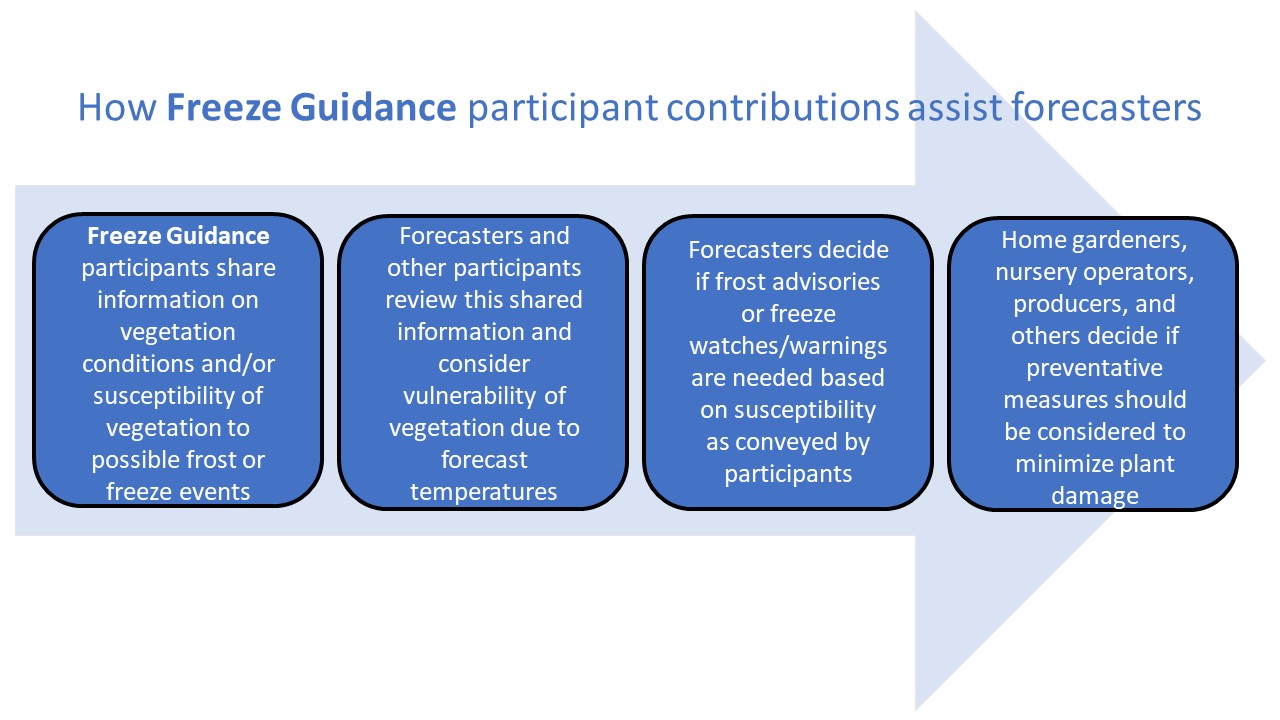About the MRCC Freeze Guidance Reports
The Midwestern Regional Climate Center collaborates with weather forecasters, University Extension specialists, state climatologists, and other vegetation experts through the Vegetation Impact Program (VIP) to improve communication about the state of vegetation and its susceptibility to potentially damaging low air temperatures.
Climatological maps of first and last freeze events are helpful to know when to expect these events, but do not fully capture the current season’s conditions. Freeze Guidance Reports allow forecasters to effectively communicate the threat of frost and freeze events, which triggers alerts to the public to provide the opportunity for preventative actions such as bringing plants indoors, covering vulnerable plants, or activating heaters.

Getting involved with Freeze Guidance Reports
Anyone who is interested in submitting Freeze Guidance Reports, including weather forecasters or local vegetation observers, is welcome to join. In order for a frost/freeze forecast to be beneficial, forecasters need to have the best guidance possible on the state of the vegetative and climatological environment.
Being a participant allows access to Freeze Guidance Report submissions, archived Freeze Guidance Reports, and the Freeze Guidance Member List.
Get Started
- Visit the Join Freeze Guidance page and register as a new member
- Login and Submit Guidance/Impact Form
Once you arrive to the Freeze Guidance Report page, guidance may be submitted by state, counties by crop reporting district, or counties by National Weather Service County Warning Area (CWA).
Each form has similar input, but the area varies based on the form selection. Through a simple 3-category guidance rating, experts can indicate the following:
- Vegetation Not Susceptible - vegetation is not currently susceptible to freezing temperatures, which means that plants are at a state that is more resistant to lower temperatures
- Mixed Susceptiblity - some, but not all, vegetation may be susceptible to freezing temperatures
- Vegetation Susceptible - vegetation is susceptible to freezing temperatures as plants are actively growing
Once submitted, email notifications are sent to VIP Freeze Guidance participants on your area’s listserv. Submissions are automatically added to the Freeze Susceptibility Guidance Map and other VIP-related products.
For VIP Freeze Guidance Report Questions, please email the MRCC mrcc@purdue.edu.